Buchi, also known as sesame balls, are golden, chewy, and extra delicious with sweetened red bean filling. Delicious as a snack or dessert!
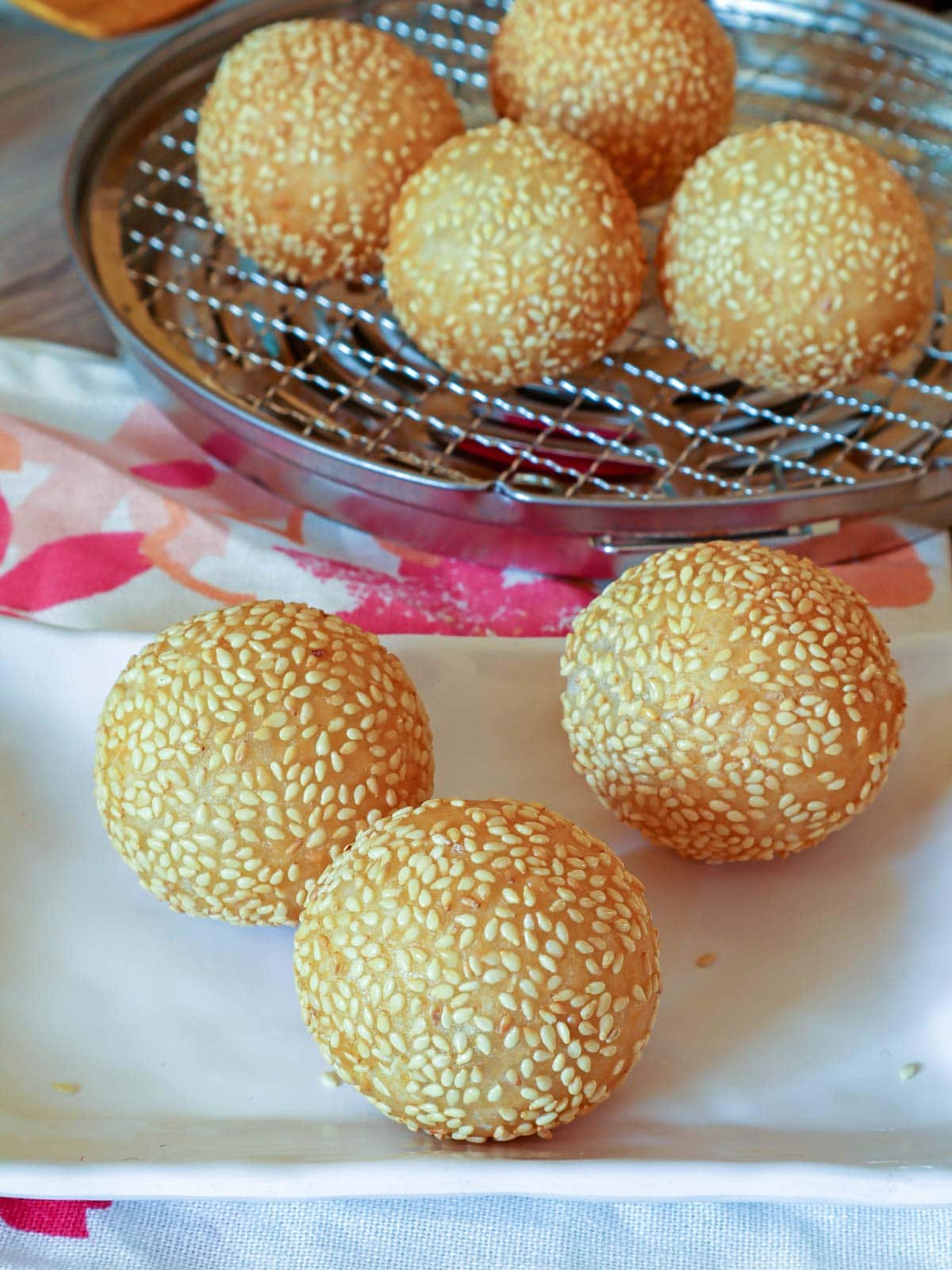
If you've been wanting to make buchi but are intimidated by what seems to be a complicated process, don't be! They're easier to make than you think.
Just read through the tips and tricks below and you'll be on your way to enjoy golden sesame balls with your favorite drinks.
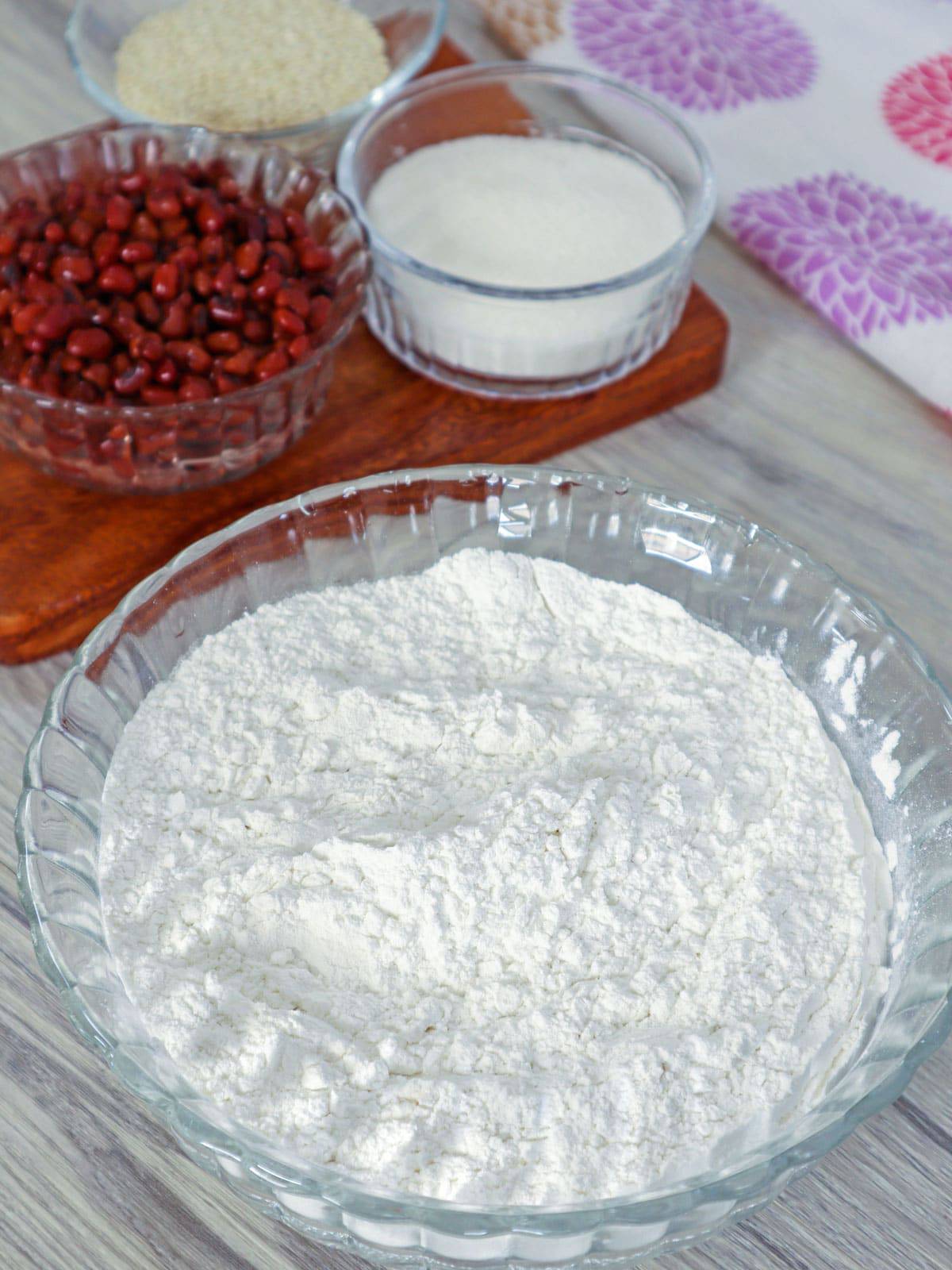
What is buchi
Buchi is a Filipino adaptation of Jian dui, a Chinese fried pastry made from glutinous rice flour, a sweet filling, and a sesame seed coating. The sticky rice flour is mixed with a liquid (usually water) to form a soft dough, shaped into a ball to encase the filling, and coated in sesame seeds before frying to golden perfection.
Also known in the United States as sesame seed balls, they're commonly sold at most Asian restaurants, dim sum houses, and bakeshops. They're golden and crunchy on the outside and soft and chewy on the inside, making a delicious and filling snack or dessert.
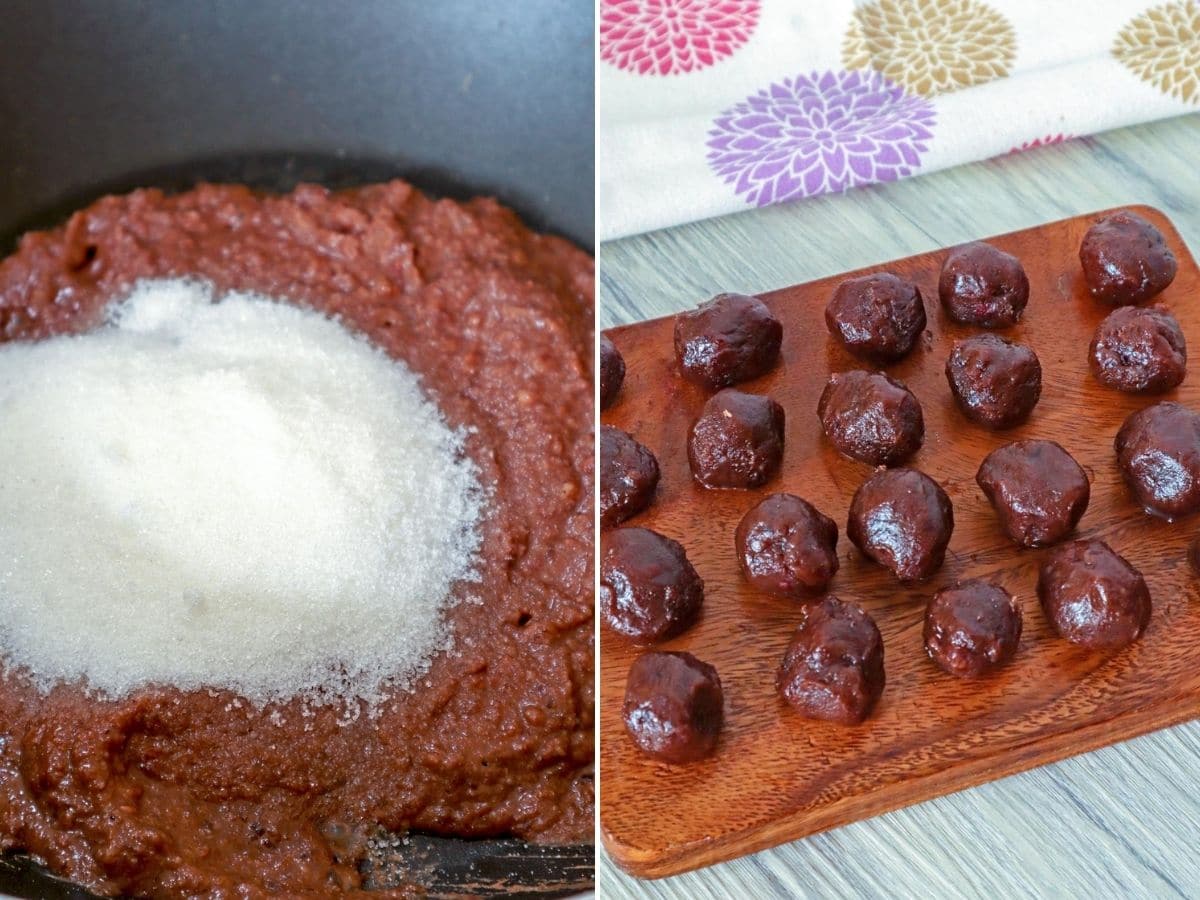
About the filling
- This sesame dumpling is traditionally stuffed with lotus, peanut, or black or red bean paste, but feel to experiment with abundant local ingredients such as purple yam, kamote, and mung beans, as well as innovative options like cheese, chocolate, peanut butter, and yema.
- Our recipe here uses sweetened red bean or azuki paste made from scratch. It took a bit of work and time to prepare as the beans needed to be soaked and simmered for hours before pureeing to a smooth consistency in a food processor and cooking down into a thick paste on the stovetop. If you want to speed up the process and still enjoy the same sweet, creamy tastes, you can buy prepared azuki pastes or pre-cooked beans at most Asian supermarkets.
- Process the cooked beans into a fine or chunky paste as desired.
- Use a small scoop to portion the sweetened mixture and refrigerate until firm to make wrapping in dough easier.
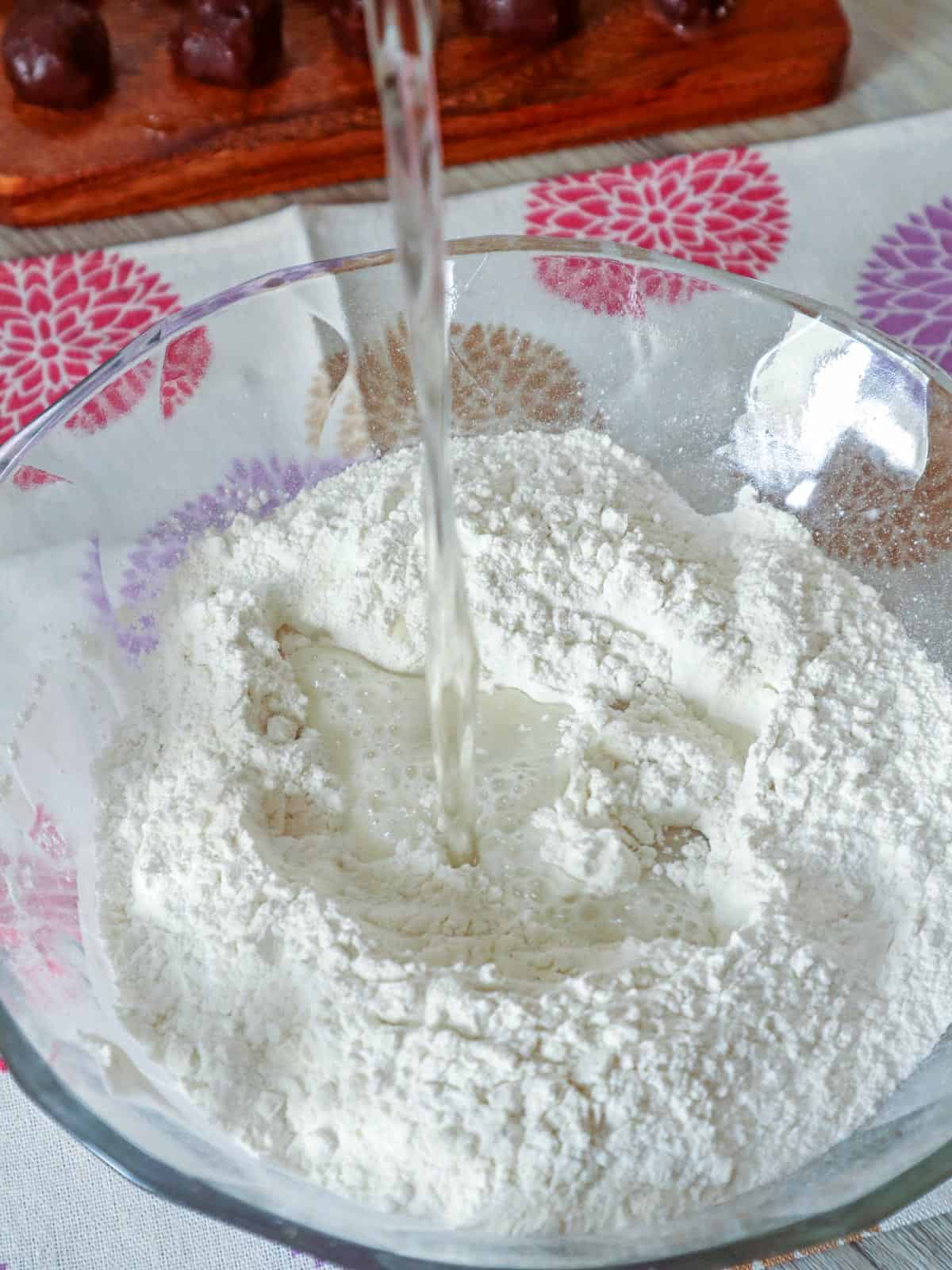
Making the dough
- Sesame balls are made with glutinous rice flour or malagkit. Make sure it's sticky rice flour and NOT regular rice flour. Check the print color on the package. Usually, rice flour has red text (R for regular) and green for sticky rice flour (G for glutinous).
- The flour and water ratio may vary depending on the brand of glutinous rice flour used. To check for the right consistency, pinch a small piece of dough and flatten it with your fingers. If it breaks and falls apart, add more water in one-tablespoon increments as needed. Add more flour as needed if it feels too wet and overly sticky.
- For a crispier shell, replace ¼ cup of glutinous rice flour with wheat flour.
- To give the sesame balls a nice color and texture, add about ½ cup of cooked and mashed potato, kamote, or kalabasa to the dough.
- Cover the balls with a clean kitchen towel or plastic film while assembling to keep them from drying out.
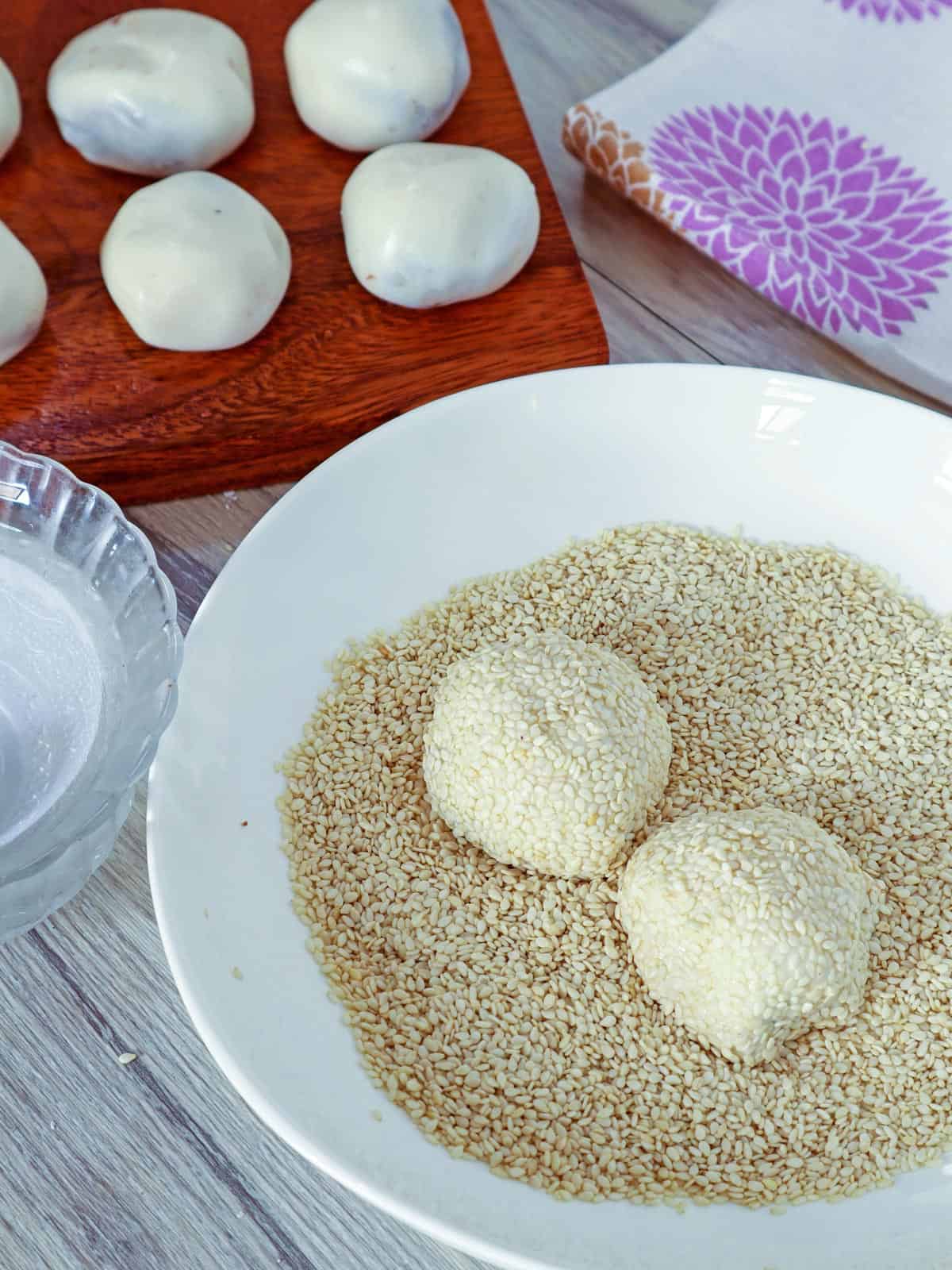
How to make the sesame seeds stick
You can keep the seeds from falling off during frying in three ways. Whatever method you use, make sure the balls are 100% covered in sesame seeds, and there are no bare spots.
- Very quickly, dip the stuffed balls in a bowl of cold water or use a spray bottle to lightly moisten them before rolling in the seeds.
- Make an edible glue by dissolving 2 tablespoons of glutinous rice flour in about ½ cup water, and quickly dip the balls in the mixture.
- Hydrate the sesame seeds. Place in a fine-mesh sieve and rinse under cold, running water until completely soaked. Drain well until moist but not overly wet and spread on a paper towel. Roll the balls in the sesame seeds.
Quick tip
You can coat the buchi with white, black sesame seeds, or a combination of both for variety.
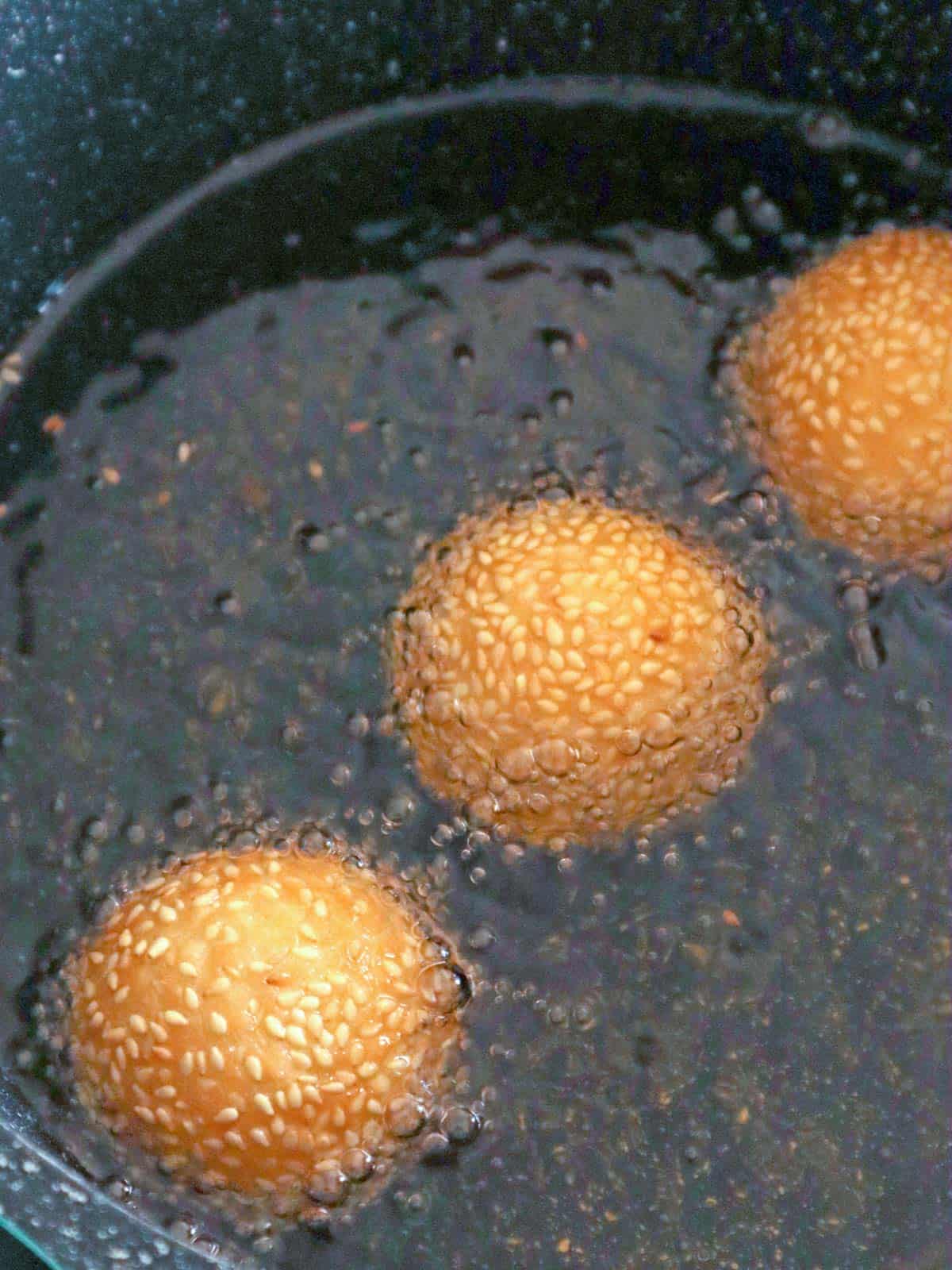
Tips for the perfect shape
- Use a neutral-tasting oil with a high smoke point, such as peanut, canola, or vegetable oil.
- Use enough oil to allow the balls to float freely to the surface when cooked. Do not overcrowd the pan, and leave room to be able to turn the buchi regularly to ensure even browning.
- Heat the oil to 320 F and add the balls. The temperature will drop to 300 F, which is gentle enough for the dough to expand without bursting. Continue to cook the balls at 300 F for 10 minutes, stirring regularly to prevent them from sticking. When they begin to float, cook for another 2 to 3 minutes, stirring and pushing down the balls in the oil. Raise the heat to 350 F and continue to cook, stirring regularly, for another 5 minutes or until golden brown.
Frying the sesame balls
The most frustrating part of making buchi is watching your perfectly golden and round sesame balls collapse after cooling. Follow the tips below on how to keep them from deflating or sagging.
- Use hot water to "cook" the dough a little. Add the hot sugar water to the flour gradually and combine into a soft, pliable texture. Knead the dough for about 2 to 3 minutes, cover, and let rest for about 10 to 20 minutes.
- Watch your measurements! Using too much water will make the balls deflate after frying.
- Like palitaw, the buchi will float to the surface of the oil when cooked. To help it keep its shape and prevent sagging, continue to cook a few minutes longer using a pair of chopsticks to turn them constantly in the oil for even browning. See the frying steps below.
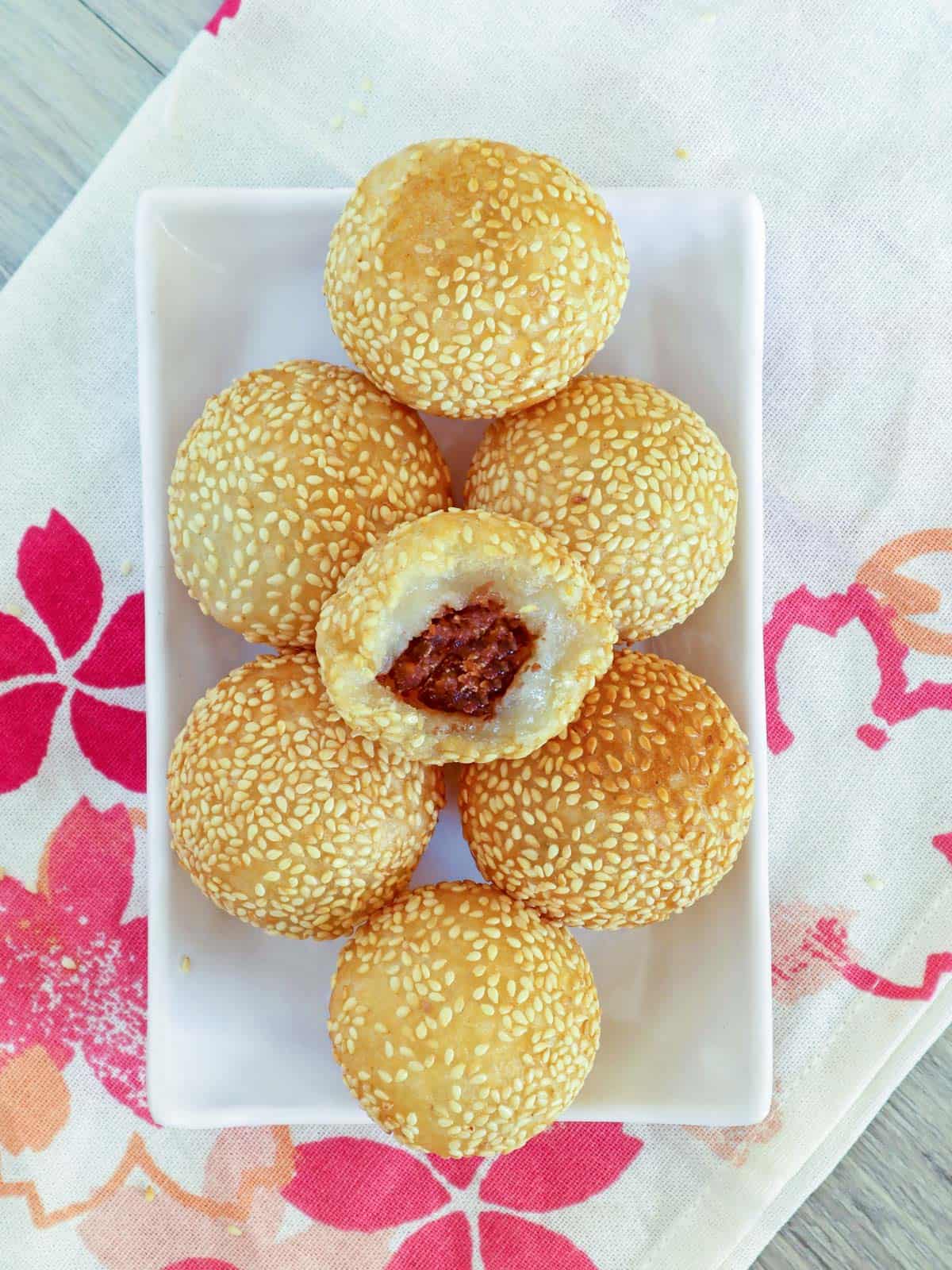
How to serve
- Buchi are delicious for breakfast, as a midday snack, or after-meal dessert. Enjoy with coffee, tea, or your favorite drinks.
Storing leftovers
- Transfer cooked sesame balls in a container or resealable bag and refrigerate for up to 3 days. Warm up in a toasted oven at 375 F for about 2 to 3 minutes.
- To store uncooked, arrange the balls in a single layer on a baking sheet, wrap them tightly with plastic film, and keep in the refrigerator for up to 3 days. Deep-fry when ready to serve.
Ingredients
For the Mung Bean Filling
- 1 cup peeled split mung beans
- water
- ½ cup sugar
For the Dough
- 1 ⅓ cups water
- ¾ cup sugar
- 3 cups glutinous rice flour
- 1 cup sesame seeds
- canola oil
Instructions
Making the Mung Bean Filling
- Rinse beans with cold water and drain well.
- In a pot over medium heat, combine beans and about 2 cups water. Bring to a boil. Lower heat, cover, and cook for about 20 to 30 minutes or until very tender. Remove from heat.
- In a blender or a mortar and pestle, process beans until smooth.
- In a non-stick pan over medium-low heat, combine pureed beans and sugar. Cook, stirring regularly until liquid is absorbed and the mixture turns into a thick paste.
- Remove from heat and allow to slightly cool. Portion into ½ tablespoonfuls and shape into rounds. Place in a single layer on a baking sheet and refrigerate for about 10 to 15 minutes or until firm.
Making the Dough
- In a saucepot over medium heat, bring the 1 ⅓ cups water to a boil. Add sugar and stir until dissolved. Remove from heat.
- In a big bowl, place the glutinous rice flour and make a well in the center. Slowly add half of the hot water. With a spatula, stir to moisten the flour.
- Add the rest of the water and continue to combine into a smooth dough. Pinch a small piece of dough and flatten it with your fingers to check for the right consistency. If the dough breaks and falls apart, add more water in 1 tablespoon increments as needed. The dough should feel wet but not overly sticky.
- Let the dough rest for 20 to 30 minutes.
Assembling the buchi
- Form the dough into a cylindrical log and cut into uniform portions. Using the palm of hands, roll each portion into 2-inch size balls. Continue to roll until the ball is smooth and without cracks.
- Place the dough balls in a single layer on a platter and repeat with the remaining dough. Cover with plastic film until ready to use.
- Using your thumb, make an indentation in the center of the dough ball and slowly enlarge to fit in a mung bean ball filling,
- Place one tablespoon mung bean filling in the center and gather edges of dough around the filling.
- Pinch dough together to completely seal and using the palm of hands, roll repeatedly into a smooth ball with no cracks or thin spots.
- Place sesame seeds in a fine-mesh sieve and rinse in cold, running water until completely soaked. Drain well until moist but not dripping wet.
- Spread the moistened sesame seeds on a flat dish.
- Gently the prepared balls in the sesame seeds until fully coated and with no bare spots, pressing lightly to make sure seeds adhere well. Repeat with remaining dough and filling.
Frying the buchi
- In a pot, heat about 3-inch deep of oil to 320 F. Make sure oil is deep enough to fully submerge balls.
- Gently lower the balls in batches into the oil, making sure not to overcrowd the pan. The temperature will plummet to 300 F; Adjust heat as needed to ensure it's maintained at 300 F. Cook the sesame balls at this temperature for about 8 to 10 minutes, stirring regularly to prevent from sticking.
- When they begin to float, continue to cook for 2 to 3 minutes, stirring regularly and pushing down into the oil with chopsticks or a slotted spoon.
- Raise the temperature to 350 F and cook the buchi for 5 minutes until golden brown.
- Remove the buchi from the pot and drain on a wire rack set over a baking sheet.
Notes
Video

Nutrition Information
“This website provides approximate nutrition information for convenience and as a courtesy only. Nutrition data is gathered primarily from the USDA Food Composition Database, whenever available, or otherwise other online calculators.”

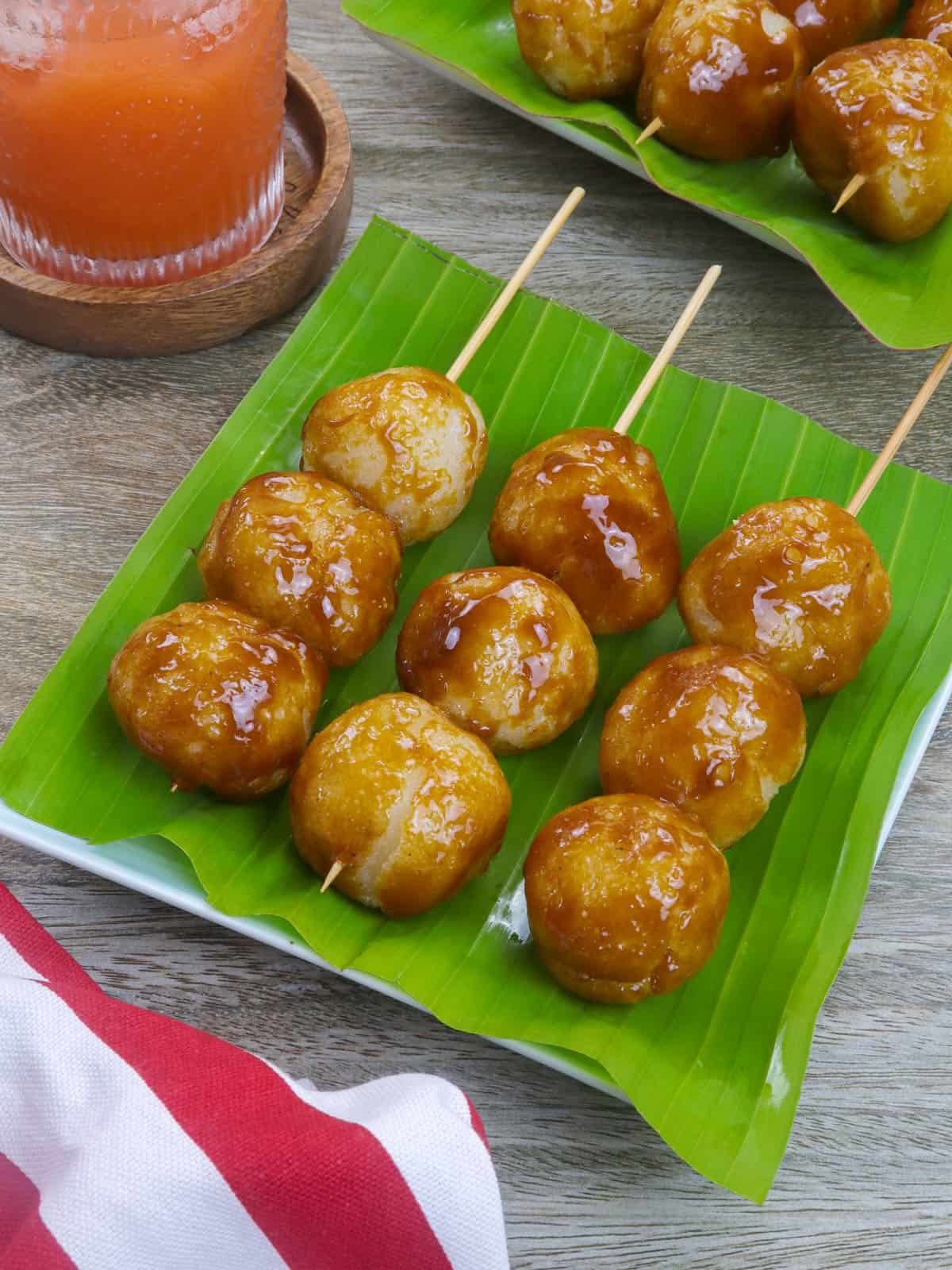
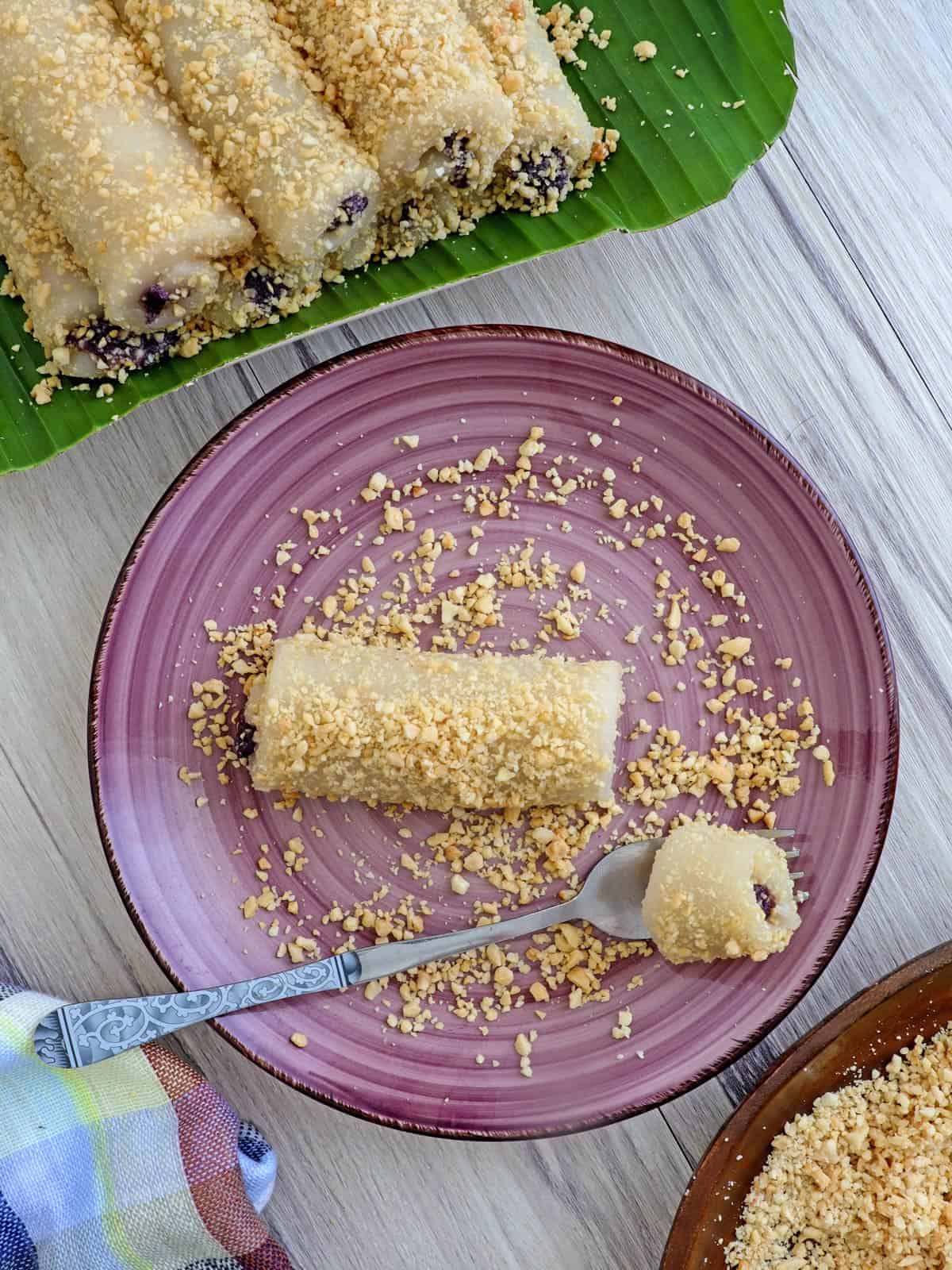
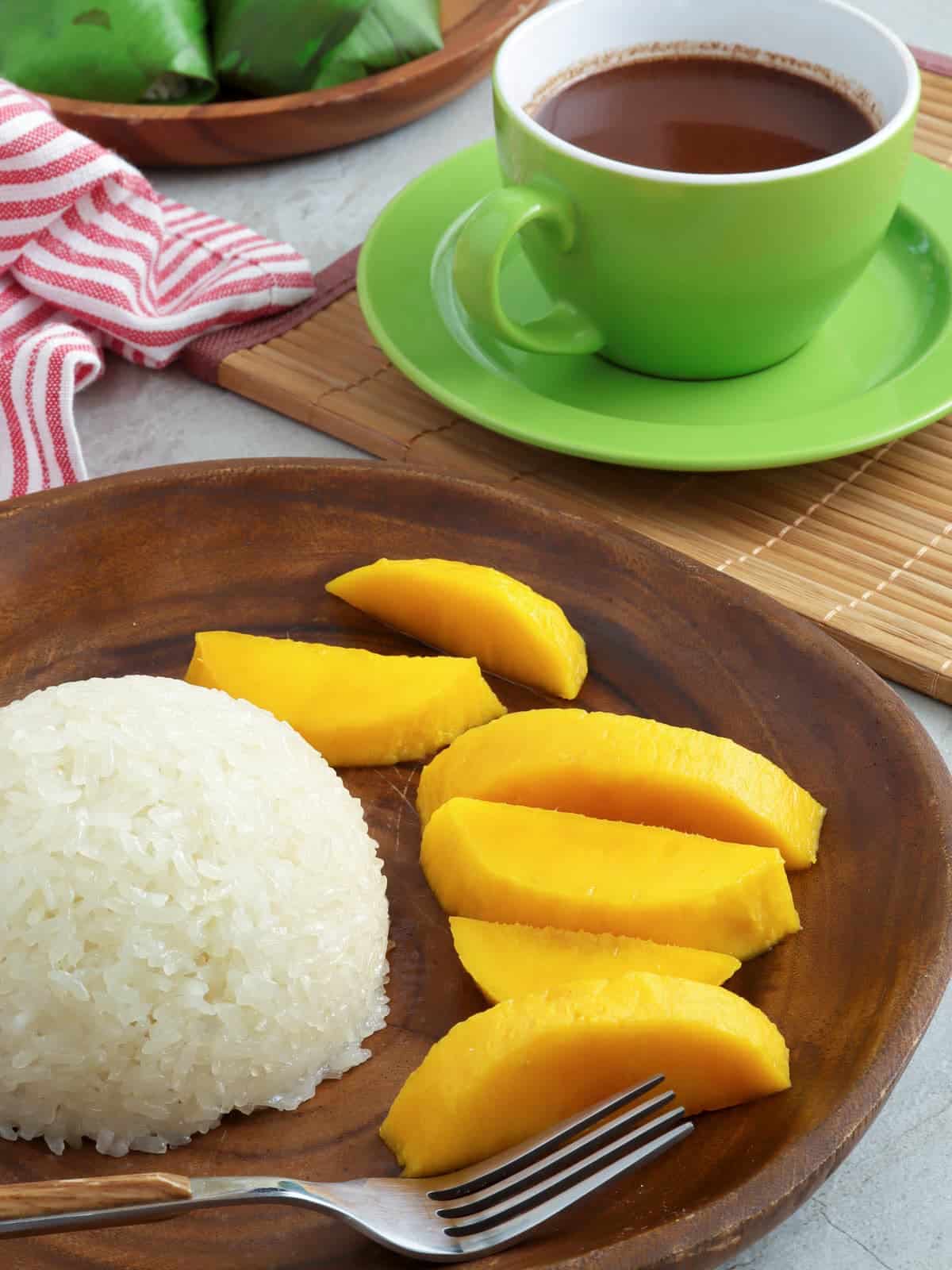
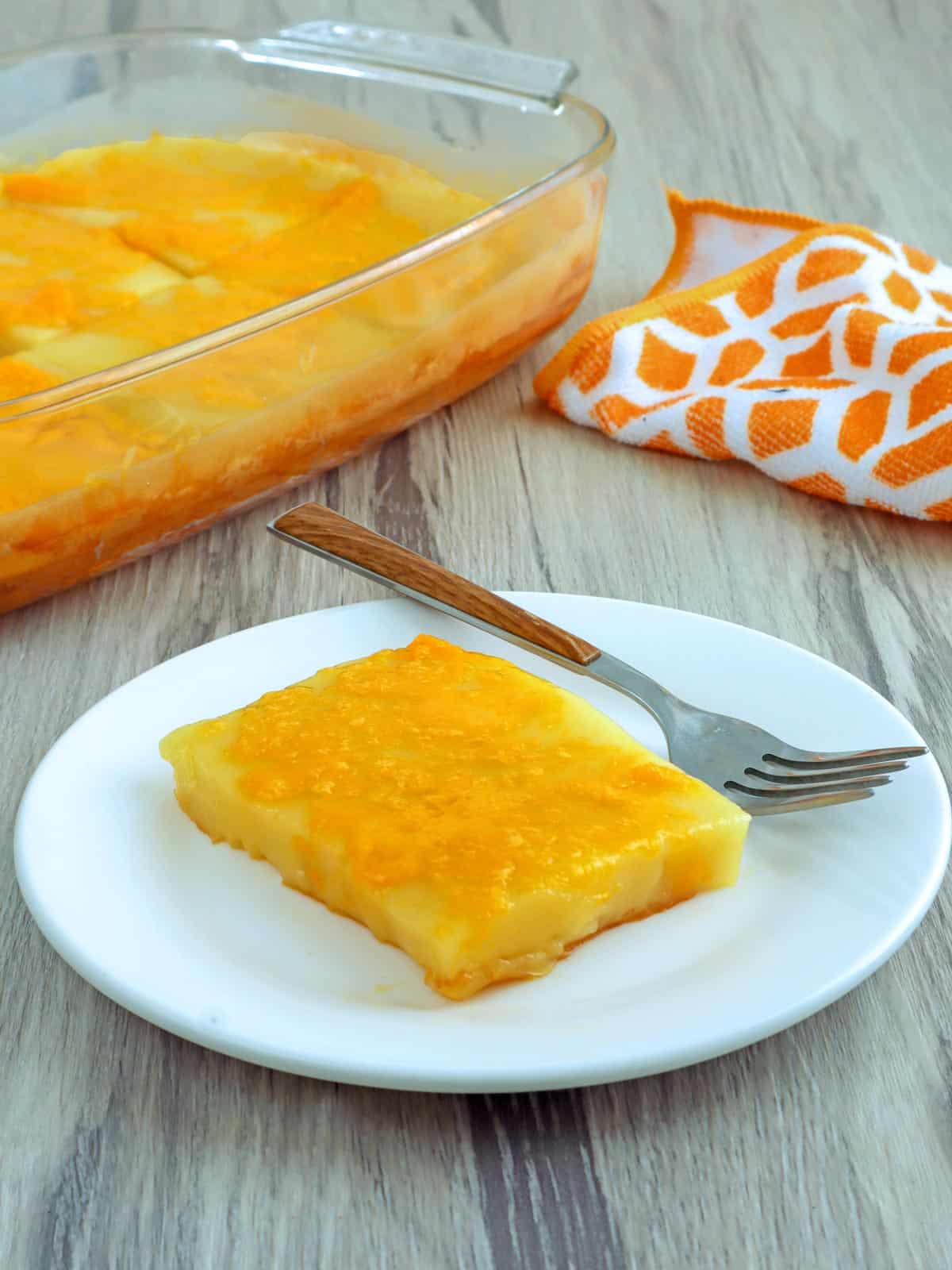
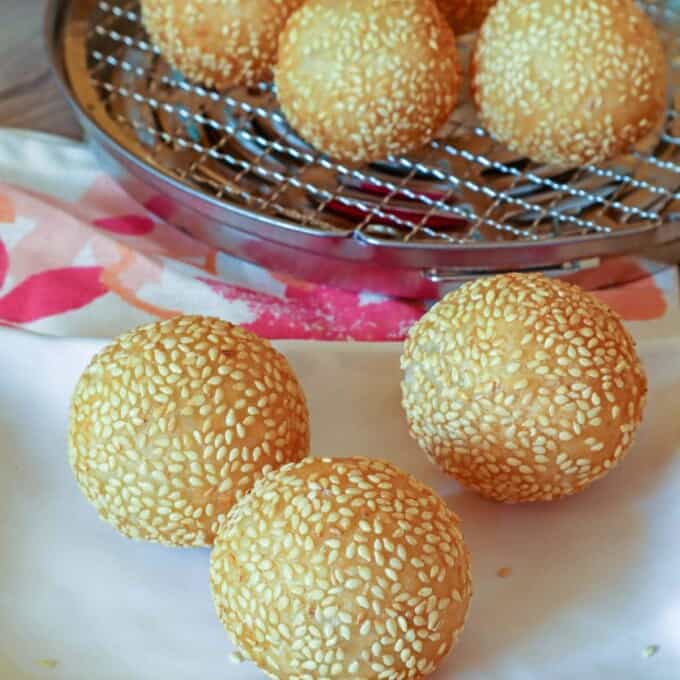

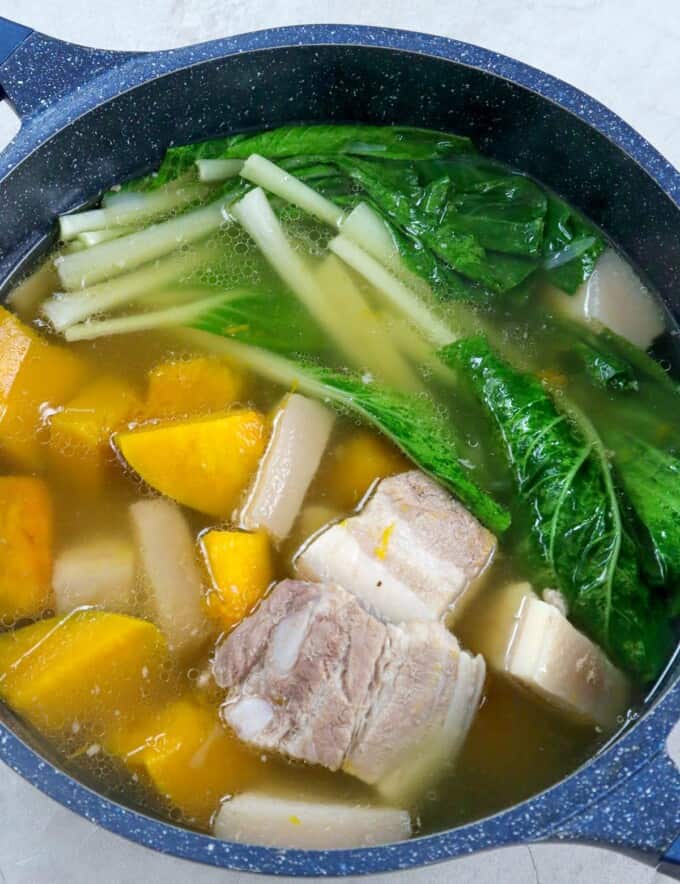
Carmelita Giodlow says
I've made palitaw today and shared to my two daughters and they love it.Thanks for sharing the recipe and looking for more recipe to cook.
Misty says
I made buchi today and it came out good, the outside was crispy and soft inside. I added 1/4 cup potato flakes as the dough was breaking when I pinched it. The balls remained round even after an hour of frying. I used deep fryer so I can control the temperature. Thank you!
Trudie says
I am so excited finding your site! Will try to make a few of these recipes someday!
Beth says
I made this BUtchi yesterday twice. It collapsed after few minutes. Taste good but the looked was sad. Ano ang ginawa kong mali?
Rona pagaduan says
Can you give the recipe thanks and god bless more power
Hazel says
May I ask how long does buchi last? On fridge and not in fridge.thanks
Jen says
Hi! Any tips for the butchi to remain soft when eating? I have tried cooking but after fried it turns very hard like u cant eat it:( tips please for a perfect butchi. Thanks!
Elle chan says
Hello, how long does it last without refregirating?
Edyn says
Hello po, thanks for sharing this recipe. I made this yesterday with ube halaya filling. I did it perfectly by following your instructions and tips. It's a hit to my friends! They loved it so much. By the way, I'm your avid follower. I love the way you share your recipes with all the tips and tricks. Keep on sharing, Ms. Lalaine 😊
Lalaine Manalo says
Thank you so much, Edyn!